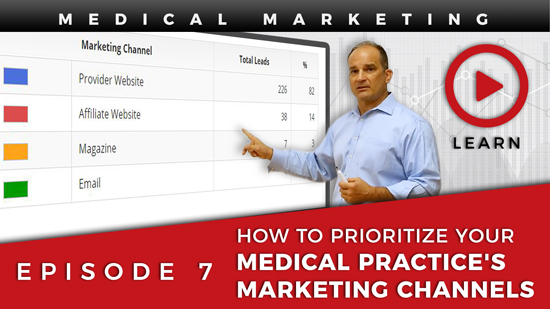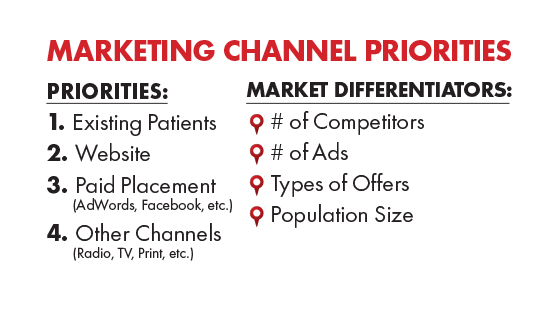Priority #1: Existing Patients
The number one priority for your medical practice marketing strategy should be your existing patient database. Your existing patients are extremely important because you already have a relationship with them. The cost to bring them back into the practice is zero (financially). The only costs associated with re-marketing to your current patients consist of the time and staff resources it takes for implementation.However, these “costs” can be diminished using technology and automated marketing tools. (See our blog and video on Patient Retention Targeting to learn more about re-marketing to your patient database.)
Creating and maintaining lifetime value for existing patients is essential and can be broken down into two parts:
- How are you maintaining and enhancing your relationship with existing patients so that you are their go-to practice for all their aesthetic or elective healthcare services?
- How are you obtaining referrals from your existing patients?
Understanding how to establish patient lifetime value and to obtain referrals from existing patients are key components of your medical marketing strategy, especially since they is essentially no real cost.
Priority #2: Website
Optimizing your medical practice’s website should be marketing channel priority number two. This channel is the most advantageous way to get patients into your practice (next to your existing patients and their referrals).
There are three necessities to making this marketing channel as effective as possible:
- SEO to drive organic traffic to the website
- Tracking the visitor to lead rate/conversion metrics
- Tracking the number of new patients your practice receives and the return-on-investment (ROI)
Priority #3: Paid Placement
Paid placement advertising (a.k.a pay-per-click or PPC ads) is a popular marketing strategy. The goal is to display business ads prominently in the SERPs (search engine results pages) and on social media channels to gain click throughs, lead generation, website visits, etc. Google AdWords and Facebook paid advertising are two popular options.
Paid placement as a marketing channel can be beneficial as it allows for:
- Control of the budget
- Keyword targeting
- Specific audience targeting
However, depending on the market you’re in, the average price to acquire a click or lead via paid placement may not be realistic. In some markets, it is statistically impossible to be profitable using paid advertising. When you get into markets like New York or California, the cost-per-click can average $15. No matter how seasoned a practice is, most are not able to monetize that expensive of a click (profitably). You need to be careful in utilizing this channel and be sure to track your return-on-investment so you don’t waste money.
Priority #4: Offline
The fourth channel varies based on the market. There are various offline (i.e. print ads) and special promotion groups (i.e. Groupon), available to practices as marketing and advertising outlets. But with all of the options, you must understand that the market your practice is in will factor into your success.
Take the following into consideration when determining which additional marketing channels to use:
- How many competitors are in your market?
- How saturated is your market with other advertisers?
- What are the types of offers in your market?
- What is the population size of your market?

















